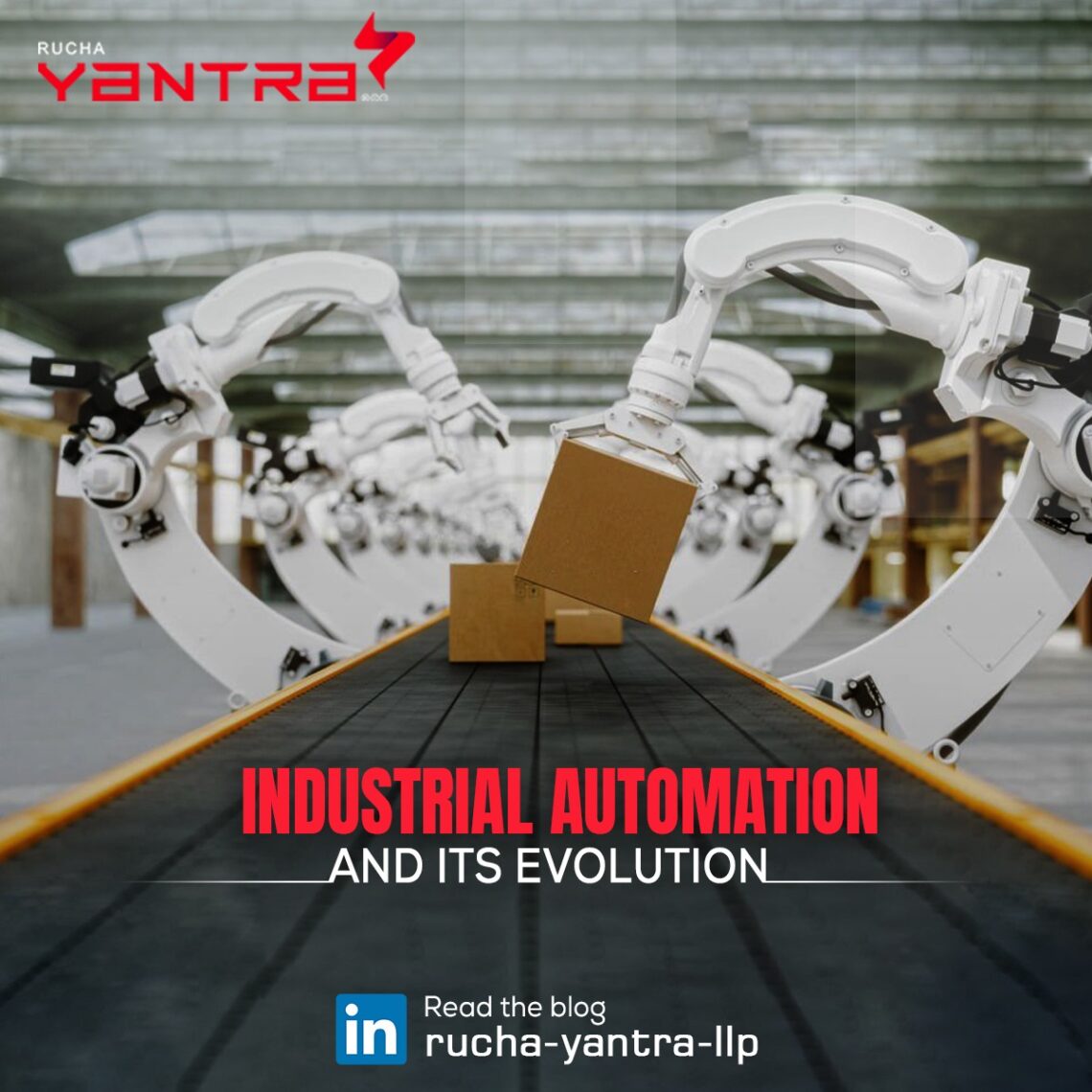Continuing our series on automation, we have now brought up the topic of Warehouse Automation. Warehouse automation is a significant contributor to the growth and economy of a country. There are approximately 167,610 warehouses worldwide, with more than 80% lacking automation. The warehouse automation industry is going to boom under Industry 4.0. Robotics, logistics, and other warehouse automation technologies are anticipated to reach a global value of over $22.4 billion. The need for warehouse automation is immense as the majority of operating budgets for warehouse facilities are composed of roughly 65% labor costs! Warehouse automation also brings safety to the environment. The number of forklift-related accidents alone totals nearly 100,000…
-
-
Manufacturing Automation – The New Frontier
Welcome back to a new series of blogs from Rucha Yantra. This time, we are talking about a new albeit already-established trend in manufacturing – Manufacturing Automation. A trend that Rucha Yantra is participating in and contributing to a lot as well. Let’s begin! Manufacturing automation refers to equipment and software that automates production systems or processes. Automation serves broadly two purposes – increasing production capacity or reducing costs, often both. Automation in manufacturing has come a long way – from using basic hydraulic and pneumatic systems to today’s modern robots. Most notably, industrial automation enhances and transforms those activities that were previously performed manually. One pioneer type of automation…
-
Ways Cloud Computing Can Help Manufacturers
Hello readers, hope you are doing great! Today, we are delving into how Cloud Computing can benefit manufacturers. Manufacturers continually search for new ways to gain an edge over their competitors by using their resources better. Cloud computing, which allows users to store, access, and use information from centralized servers instead of local storage devices, might be the answer manufacturers have been looking for to improve factory efficiency and cut costs in the long run. Let’s check out how! Improve visibility By storing data in the cloud, manufacturers can improve their visibility into operations and make better decisions. Cloud based data can be accessed from anywhere, at any time, giving…
-
5 Major Advantages of Cloud Computing
In the previous blog, we introduced you to the vast world of Cloud Computing. Today, we’ll take it a bit further and share its many advantages. Cloud computing plays a significant role in how we live today – the apps we use, the services we consume, how we communicate, and how we collaborate with our colleagues for work. But, how is it better than the traditional alternatives? How does it improve our lives and work? Are there any disadvantages to it? Rucha Yantra will try and answer these questions for you – so let’s start! How Cloud Computing is Superior to Traditional Models Flexibility One of the main reasons why…
-
What is cloud computing, and why should you care?
Welcome to another exciting series of information and insights into next-gen technology. This time, it’s Cloud Computing! Cloud computing is one of the most valuable innovations of recent years, and it will continue to grow in value and importance in the coming decades. But what exactly is cloud computing? Where did it come from? How has it changed the lives of billions of people around the world? Let’s take a closer look at these questions while also exploring what experts predict for the future of cloud computing, so you can decide if it’s worth your time and effort to dive into this fascinating world on your own. What Is Cloud…
-
Types of Industrial Automation Systems
Welcome back to another piece regarding Industrial Automation Systems. In this blog, we shall talk about the various types of systems and their advantages for the manufacturers. Let’s begin! Ever since the surge of the industrial revolution, there has been a continuous need for automation and the complete transformation of quality-infused final products. Industrial automation calls for reducing human labor and better handling the production process through machines like a drill, conveyor belt, motors, etc. Many industrial experts in the past decade have proposed the need for high volume and high-quality products which are highly reliable and less obsolete. Large production units and conglomerates have realized that catering to such…
-
The Many Advantages of Embracing Industrial Automation
Hey there, hope you liked our last piece that introduced the world of Industrial Automation. Having seen how it evolved and why we need it, let’s now get to know the various advantages it brings to the table. Automation is the way of the future, where there is a healthy collaboration between robots, artificial intelligence, and uniquely human skills. And leading firms around the globe are no stranger to the true potential of industrial automation. The global industrial automation market is forecasted to reach USD 395.09 billion by 2029, and irrespective of the industry, automation is already emerging as a critical component for scalable growth. Contrary to popular belief, industrial…
-
What is Industrial Automation, and Where is it Taking Us?
Welcome back to another series of interesting information and insights into modern technologies. This time around, we shall be taking up the topic of Industrial Automation. We hope you find it interesting. Let’s begin! Automation is rapidly transforming how we think about, operate, and utilize technology across industries for various processes. Today, industrial automation is a reality that goes beyond mechanization – it involves the active use of control devices like PCs, PLCs, and PACs to successfully navigate industrial processes. Though it is broad in scope and purpose, industrial automation can be defined precisely. Simply put, it refers to the integration of computerized machinery, information technologies, and control systems into…
-
The many benefits of warehouse robotics
Welcome back! As we wrap up the series on warehouse robotics, where we understand the term and the different types of warehouse robots in the previous two blogs, today, we shall list down the many benefits of putting robots to use in warehouses. Let’s begin. Industrial productivity has come a long way since the 18th century. Not only have industries revamped themselves in terms of the total output, but the resources expended to produce a single unit of any finished product have also dramatically come down. Novel technological innovations have helped companies achieve both of these objectives simultaneously. Robotics is one such technology. Unerring accuracy, uninterrupted efficiency, and top-notch productivity…
-
The 7 Types of Robots that are Rewriting Norms of Industrial Productivity
Welcome back. In the last piece, we looked at how warehouse robotics has evolved into a mainstream application subject, its benefits, and the various use cases. This time around, we shall look at the different types of robots out there classified basis applications. Let’s begin! Over the years, robotics as an aspect of industrial science has evolved in leaps and bounds to be able to substitute many of the factory/warehouse floor activities that require human intervention. Today, activities like picking, segregating, packing and transportation are handled by robots in most technologically advanced companies. Without further ado, let us dig into the different kinds of robots at work on the factory…








